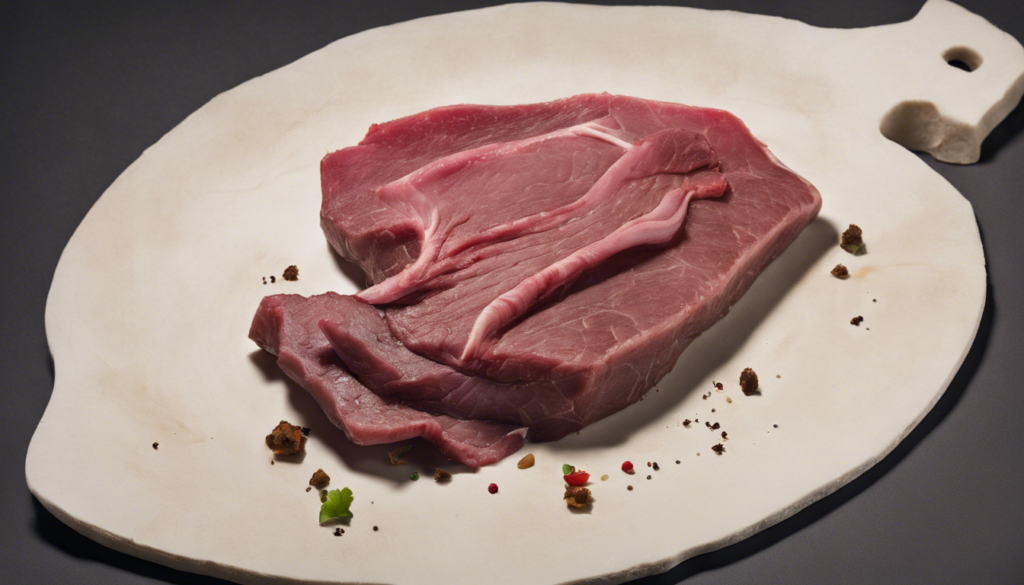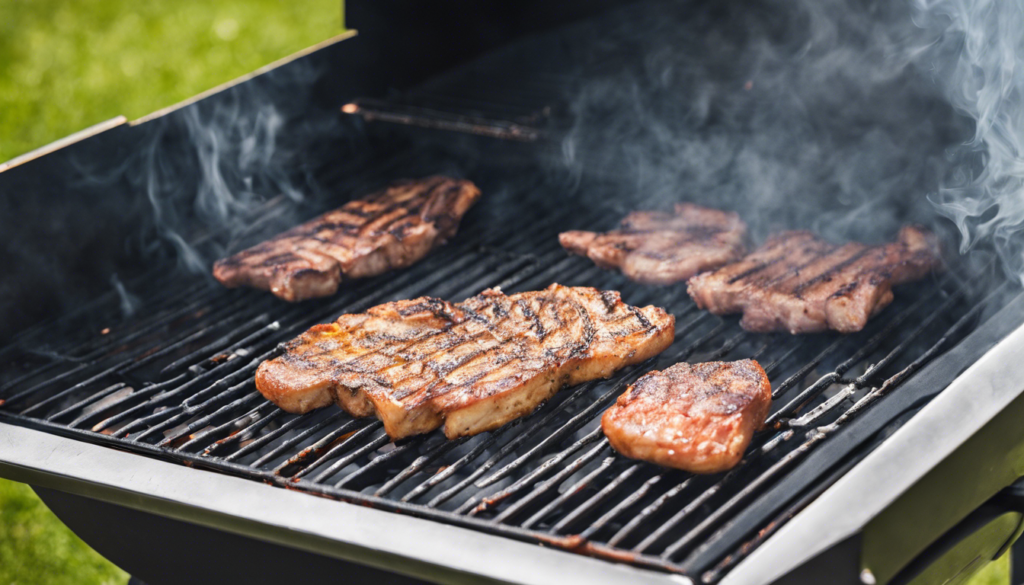Exotic Indulgence: Mastering the Art of Smoking Beef Tongue
Are you ready to embark on a culinary adventure that will tantalize your taste buds? Welcome to the world of exotic indulgence, where we master the art of smoking beef tongue. This article will guide you through every step of this unique culinary journey, from understanding the delicacy to serving it with flair. So why not step out of your comfort zone and try something new?
Exploring new culinary experiences broadens your palate, introduces you to different cultures, and can even inspire creativity in your own cooking. The art of smoking beef tongue may be unfamiliar, but it promises an unforgettable gastronomic experience.
Understanding the Beef Tongue: An Unexplored Delicacy
Beef tongue, a cut often overlooked in Western cuisine, is a delicacy in many cultures. It has a rich, meaty flavor and a tender texture that becomes incredibly succulent when smoked. The tongue is a muscle, and like other meats, it is packed with protein and essential nutrients.
From a nutritional standpoint, beef tongue is a powerhouse. It’s high in protein, low in fat, and packed with vitamins and minerals like zinc, iron, and B-vitamins. It’s a healthy choice for those looking to incorporate more nutrient-dense foods into their diet.
| Nutrient | Amount per 100g |
|---|---|
| Protein | 16g |
| Fat | 15g |
| Zinc | 4mg |
| Iron | 2mg |
| Vitamin B12 | 2.2µg |
The History of Smoking Beef Tongue
Smoking beef tongue has deep roots in many cultures. The practice originated as a preservation method before the advent of refrigeration. Over time, it evolved into a culinary art form, with each culture adding its unique twist.
Today, smoked beef tongue is a staple in cuisines around the world. From the hearty stews of Eastern Europe to the flavorful tacos of Mexico, this delicacy has proven its versatility and enduring appeal.
Preparing the Beef Tongue for Smoking
Selecting the best beef tongue is the first step in the smoking process. Look for tongues that are fresh, firm, and pinkish-grey in color. Avoid any that have a strong odor or discoloration.
Before smoking, the beef tongue must be properly prepared. This involves cleaning the tongue, removing any excess fat, and brining it for at least 24 hours. Brining not only flavors the meat but also tenderizes it, ensuring a succulent end product.
Essential Tools for Smoking Beef Tongue
Having the right tools can make the smoking process easier and more enjoyable. At the very least, you’ll need a good-quality smoker, wood chips for flavor, a meat thermometer, and a sharp knife for slicing the cooked tongue.
A good smoker is crucial for achieving the perfect smoke flavor and tender texture. Whether you choose a traditional wood-burning smoker or a modern electric model, make sure it maintains a consistent temperature and produces plenty of smoke.
The Art of Smoking: A Step-by-Step Guide
Smoking beef tongue is a slow and patient process, but the results are well worth the wait. Start by preheating your smoker to 225°F (107°C). Once the smoker is ready, place the brined tongue on the grill, fat side up. Maintain a consistent temperature and smoke the tongue for about 4-6 hours, or until it reaches an internal temperature of 150°F (66°C).
Controlling the time and temperature is crucial for achieving a perfectly smoked beef tongue. Too high a temperature can dry out the meat, while too low a temperature can result in an undercooked tongue. A meat thermometer is an invaluable tool for monitoring the internal temperature.
Flavoring the Beef Tongue: Marinades and Rubs
Marinades and rubs can add a depth of flavor to the beef tongue. A simple marinade of olive oil, garlic, and herbs can work wonders. For a spicy kick, try a rub of chili powder, cumin, and paprika.
Applying the rub effectively is key to infusing the meat with flavor. Massage the rub into the tongue, making sure to cover all sides. Then let the tongue rest for a few hours to allow the flavors to penetrate.
Testing for Doneness: Ensuring a Perfectly Smoked Beef Tongue
Knowing when the beef tongue is ready can be a bit tricky. The best way to test for doneness is by using a meat thermometer. The internal temperature should be 150°F (66°C) for a perfectly smoked tongue.
Common mistakes to avoid include overcooking the tongue, which can make it tough and dry, and not allowing it to rest before slicing. Resting the tongue allows the juices to redistribute, resulting in a more succulent meat.
Serving Suggestions for Smoked Beef Tongue
Smoked beef tongue can be served in various ways. In traditional Mexican cuisine, it’s often sliced and served in tacos with a squeeze of lime and a sprinkling of cilantro. In Eastern Europe, it’s typically served in hearty stews or sliced and served cold with horseradish sauce.
For a creative twist, try serving thinly sliced smoked beef tongue on a charcuterie board with pickles, mustard, and crusty bread. Or use it to top a pizza for an unexpected and delicious topping.
Pairing Smoked Beef Tongue with Drinks
Pairing the right drink with your smoked beef tongue can elevate your dining experience. A robust red wine, like a Cabernet Sauvignon or a Syrah, can stand up to the rich, smoky flavors of the beef tongue.
If you prefer beer, a dark stout or a crisp lager can also complement the smoked beef tongue. For non-alcoholic options, a tart lemonade or a sweet iced tea can provide a refreshing contrast to the smoky, savory flavors.
Health Benefits of Consuming Beef Tongue
Aside from its delicious taste, beef tongue offers several health benefits. It’s high in protein, which is essential for muscle growth and repair. It’s also a good source of iron, which is important for healthy blood cells, and zinc, which supports immune health.
Additionally, beef tongue is rich in B-vitamins, particularly B12, which is important for nerve function and the production of DNA and red blood cells. With its high nutrient content, beef tongue is a healthy and delicious choice for meat lovers.
Frequently Asked Questions about Smoking Beef Tongue
Smoking beef tongue may seem daunting, but with a little knowledge and patience, anyone can master this culinary art. Here are some common questions and expert answers to guide you on your journey.
Tips and Tricks for Perfectly Smoked Beef Tongue
Like any culinary endeavor, smoking beef tongue comes with its own set of challenges. But with a few tips and tricks, you can overcome these hurdles and produce a perfectly smoked beef tongue.
First, be patient. Smoking is a slow process, and rushing it can result in tough, dry meat. Second, don’t skip the brining step. Brining not only flavors the meat but also tenderizes it, ensuring a succulent end product. Finally, invest in a good-quality smoker and meat thermometer. These tools are crucial for achieving the perfect smoke flavor and the right internal temperature.
Exploring Other Exotic Smoked Dishes
Once you’ve mastered the art of smoking beef tongue, why not explore other exotic smoked dishes? From smoked duck to smoked rabbit, the world of exotic smoked meats is full of exciting flavors and textures waiting to be discovered.
So go ahead, step out of your culinary comfort zone, and embrace the exotic indulgence of smoking beef tongue. You might just discover your new favorite dish.
Conclusion: Embrace the Exotic Indulgence of Smoking Beef Tongue
We hope this guide has inspired you to try smoking beef tongue, a culinary adventure that promises a unique and unforgettable gastronomic experience. From selecting the best beef tongue to serving it with flair, we’ve covered every step of this exotic indulgence.
So why not take the plunge? With a little patience and the right tools, you can master the art of smoking beef tongue. And who knows? You might just discover a new passion for exotic culinary experiences. Happy smoking!


